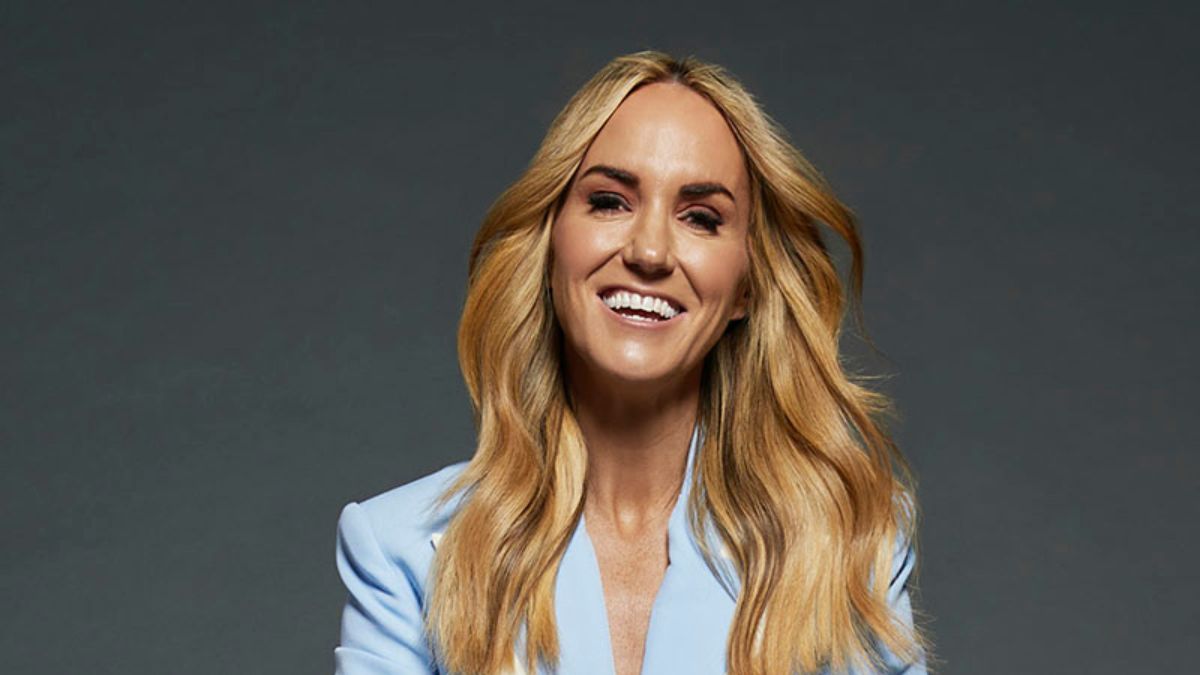It’s More Than Just a Logo, It’s Your Promise
It all starts with a flicker of an idea, doesn't it? A problem you know you can solve, a passion you can't ignore, a vision for something better. You decide to turn that flicker into a flame by starting a business. You build a product, design a service, and you're ready to share it with the world. One of the first things on your to-do list is likely "create a brand."
But what does that actually mean?
For so many aspiring entrepreneurs, this is where the confusion begins. They think of a brand as a visual identity—a clever name, a beautiful logo, a curated palette of colours, and a stylish font. And while those elements are incredibly important, they are not your brand. They are the expressions of your brand.
So, how do you build a brand that truly connects with people, inspires loyalty, and stands the test of time?
A true brand is a promise. It’s the gut feeling people have about your business. It's your reputation. It’s the story you tell and, more importantly, the story people tell about you when you're not in the room. It’s the sum total of every single touchpoint a customer has with your business, from your social media posts to your packaging to the way you answer a customer service query.
Building a brand is the most critical work you will do as a founder. It’s the foundation upon which everything else is built. I’m so passionate about this topic that I dedicated an entire episode of my podcast, Build Your Brand, to breaking it down. In this guide, I want to walk you through the essential pillars of brand building that I discuss in the episode and have learned over decades of building businesses like RedBalloon.
This is your ultimate guide on how to build a brand from the ground up.
Start with Your "Why" – The Soul of Your Brand
Before you ever think about a logo or a tagline, you must go deeper. You must define your purpose. The most powerful brands in the world are built on a clear and compelling "why." This is your reason for being, beyond making money.
Ask yourself these fundamental questions, and don't stop until you have answers that resonate on an emotional level:
- Why does my business exist? What change am I trying to make in the world or in my customers' lives?
- What problem am I truly solving? Go beyond the surface level. A drill company isn't just selling drills; it's selling the ability to create a home, to hang a cherished family photo. It's selling the feeling of accomplishment.
- What do I believe in? What are the core values that will guide every decision I make?
When I started RedBalloon, my "why" wasn't just to sell gift vouchers. My "why" was to change the nature of gift-giving in Australia from accumulating "stuff" to collecting meaningful experiences and memories. I believed that sharing an experience connects people more deeply than any physical object ever could.
This core purpose informed everything. It guided the types of experiences we sourced, the language we used in our marketing, and the culture we built within our team. Your "why" is your north star. It’s what will keep you going during the tough times and what will attract a tribe of loyal followers who believe what you believe.
Action Step: Write down your brand's purpose statement. Make it clear, concise, and inspiring. This isn't just for your website's "About Us" page; it's for you and your team to live by every single day.
Define Your Ideal Customer – You Can't Be for Everyone
One of the biggest mistakes entrepreneurs make is trying to appeal to everyone. When you try to be everything to everybody, you end up being nothing to anyone. The key to powerful brand building is to know exactly who you are for, and just as importantly, who you are not for.
You need to go beyond basic demographics (e.g., "women aged 25-40"). You need to understand your ideal customer on a psychological level. This is about creating a detailed customer avatar.
Give this person a name. Find a stock photo to represent them. Then, answer these questions about them:
- What are their deepest aspirations and goals in life?
- What are their biggest fears and frustrations?
- What does a day in their life look like?
- What books, blogs, or podcasts do they consume?
- What other brands do they love and why?
- What is their core motivation for seeking out a product or service like yours?
The more intimately you know this person, the more effectively you can build a brand that speaks directly to their heart. Every decision, from your product features to your marketing copy to your pricing, becomes clearer because you can ask a simple question: "What would [Your Avatar's Name] think of this?"
This deep understanding is the secret to creating a brand that feels personal and resonant, making your ideal customer feel seen, heard, and understood.
Craft Your Brand Promise and Messaging
Once you know your "why" and "who," you can begin to craft your "what" and "how"—your brand's core messaging. This includes your value proposition, your tone of voice, and your key messages.
Your Unique Value Proposition (UVP)
This is a clear statement that describes the benefit you offer, how you solve your customer's need, and what distinguishes you from the competition. It should be short, powerful, and easy to understand. A great formula is: We help [Your Audience] do/get/feel [Benefit/Transformation] by [Your Unique Method].
Your Brand Voice
How does your brand sound? Is it warm and nurturing, or witty and irreverent? Is it authoritative and professional, or playful and casual? Your brand voice should be consistent across all platforms—your website, your social media, your emails, and even your packaging. It should be an authentic reflection of your brand's personality and values, and it must resonate with your ideal customer.
Key Messaging Pillars
These are the three to five core ideas or themes that you want your brand to be known for. For RedBalloon, these might have been:
- The value of experiences over things.
- The joy of connection and shared memories.
- The ease and convenience of finding the perfect gift.
These pillars become the foundation for all of your content creation, ensuring your message is consistent and reinforces what your brand stands for.
Design Your Visual Identity – The Outward Expression
Now we get to the part everyone loves: the visual identity. This is where you translate all of that foundational strategy work into tangible, visible assets. Remember, your visual identity is not your brand; it's the uniform your brand wears. And that uniform needs to be consistent, professional, and a perfect reflection of the person wearing it.
- Logo: Your logo is the visual shortcut to your brand. It should be simple, memorable, and versatile enough to work across different sizes and platforms. It’s the single most recognizable element of your brand.
- Colour Palette: Colours evoke emotion. Choose a palette that reflects your brand's personality and appeals to your target audience. A tech startup might use blues to convey trust and intelligence, while a wellness brand might use greens and earthy tones to convey nature and calm.
- Typography: The fonts you choose are the voice of your written communication. Are they modern and clean, or traditional and elegant? Your typography should be legible and consistent across your website, marketing materials, and products.
- Imagery: The photos, illustrations, and icons you use tell a powerful story. Your imagery should be high-quality and stylistically consistent, reflecting the world of your brand and your ideal customer.
Consistency here is non-negotiable. When a customer sees your visuals, they should instantly recognize that it’s you, whether it’s on Instagram, your website, or in a retail store.
Live the Brand – The Customer Experience Is Everything
This is arguably the most important pillar of all. A great brand isn't just what you say it is; it's what you do. Every single interaction a customer has with your business is an opportunity to either build up or tear down your brand's reputation.
The customer experience is your brand in action.
Consider every touchpoint:
- Website/App: Is it easy to navigate? Is the checkout process seamless?
- Packaging: Does the unboxing experience feel special and aligned with your brand's promise?
- Customer Service: Are your support staff empowered to solve problems? Are their responses friendly, helpful, and in your brand's voice?
- Product/Service Quality: Does your offering deliver on the promise you made in your marketing?
- Communication: Are your emails, newsletters, and social media posts providing value and building a relationship?
When you consistently deliver an exceptional experience, your customers become your best marketers. They become advocates who tell their friends, leave glowing reviews, and champion your brand. This word-of-mouth marketing is the most powerful and authentic form of brand building there is, and it’s earned through action, not advertising.
Build Your Community and Tell Your Story
With a solid brand foundation in place, it's time to share it with the world. This is where content and community come into play. Your goal is not just to acquire customers, but to build a tribe of people who are invested in your brand's journey and purpose.
- Content Marketing: Create valuable content (blog posts, videos, guides, podcasts) that helps, educates, or entertains your ideal customer. Don't just talk about your product; talk about the problems you solve and the lifestyle you represent. This positions you as an authority and builds trust.
- Social Media: Choose the one or two platforms where your ideal customer spends their time and go deep. Don't just broadcast your message; engage in conversations, ask questions, and build genuine relationships. Show the human side of your brand.
- Partnerships & Collaborations: Partner with other brands or influencers who share your values and serve a similar audience. This can introduce your brand to a new, relevant community in a way that feels authentic and endorsed.
Building a brand is a marathon, not a sprint. It requires showing up consistently, providing value, and telling your story over and over again.
Ready to Dive Deeper?
I’ve covered the essential framework here, but building a brand is a nuanced and deeply personal journey. There are stories, case studies, and hard-won lessons that can only be shared in a real conversation.
That’s why I encourage you to listen to the "Build Your Brand" episode of my podcast. In it, I share my personal experiences from the front lines of building RedBalloon, the mistakes I made, the lessons I learned, and the key insights that can help you fast-track your own success. We go deeper into the psychology of brand building and the practical steps you can take today to create a brand that people truly love.
Your Brand is Your Legacy
Learning how to build a brand is the single most important skill you can develop as an entrepreneur. It’s the art and science of creating meaning, connection, and reputation in a crowded marketplace.
It’s about defining your purpose, knowing your customer, crafting your promise, designing your identity, and, above all, living out that promise in everything you do.
Your brand is your legacy. It’s what will remain long after the sales have been counted. It’s the impact you make and the story they’ll tell.
Now go, build something unforgettable.






